What is a RJ45 Keystone Jack?
RJ45 keystone jack is an important component of a local area network. It is a standardized interface module commonly used for network connections, used to connect computers, routers, and other network devices. It can provide reliable and high speed data transmission, enabling effective communication and data exchange between network devices, has been widely used in various Ethernet networks.
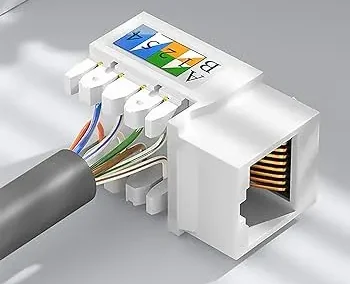
Category of Keystone Jack
Ethernet cables have different categories due to their different performance. Network keystone jacks are also classified into different categories based on the specifications of the network cables they support, mainly including CAT5E, CAT6, CAT6A, CAT7, and CAT8 RJ45 keystone jacks.
Matching Ethernet keystone jacks with corresponding category network cables can fully leverage performance advantages to achieve the required network transmission speed and performance.
| Category | Transmission Frequency | Transmission Speed | Application |
| CAT5E | 100Mhz | 1000Mbps | 1000Base-T Ethernet |
| CAT6 | 250Mhz | 1000Mbps | 1GBase-T Ethernet |
| CAT6A | 500Mhz | 10Gbps | 10GBase-T Ethernet |
| CAT7 | 600Mhz | 10Gbps | 10GBase-T Ethernet |
| CAT8 | 2000Mhz | 40Gbps | 40GBase-T Ethernet |
Types of Keystone Jacks
There are many types of keystone jacks available to meet different network applications and environments. According to different standards, they can be classified into different types.
By Shielding Type
Unshielded Keystone Jack
Unshielded RJ45 keystone jacks are currently one of the most mainstream network keystone jacks in the market, due to the widespread use of unshielded Ethernet cables. Its shell is made of plastic, usually PC or ABS material. Due to the absence of additional metal shielding structures, UTP keytone jacks have lower resistance to electromagnetic interference and are more suitable for general home and office network environments.
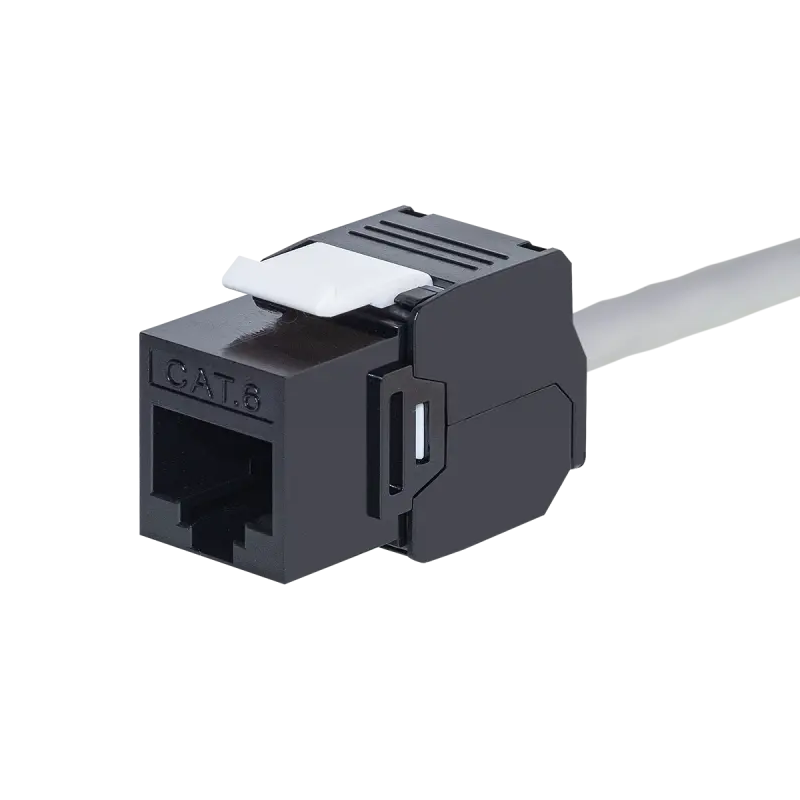
Shielded Keystone Jack
Shielded keystone jack has a specially designed shielding structure, the shell is made of metal or alloy materials, which can effectively block external electromagnetic interference, reduce signal propagation loss and attenuation. STP keystone module is very suitable for environments with high electromagnetic interference.
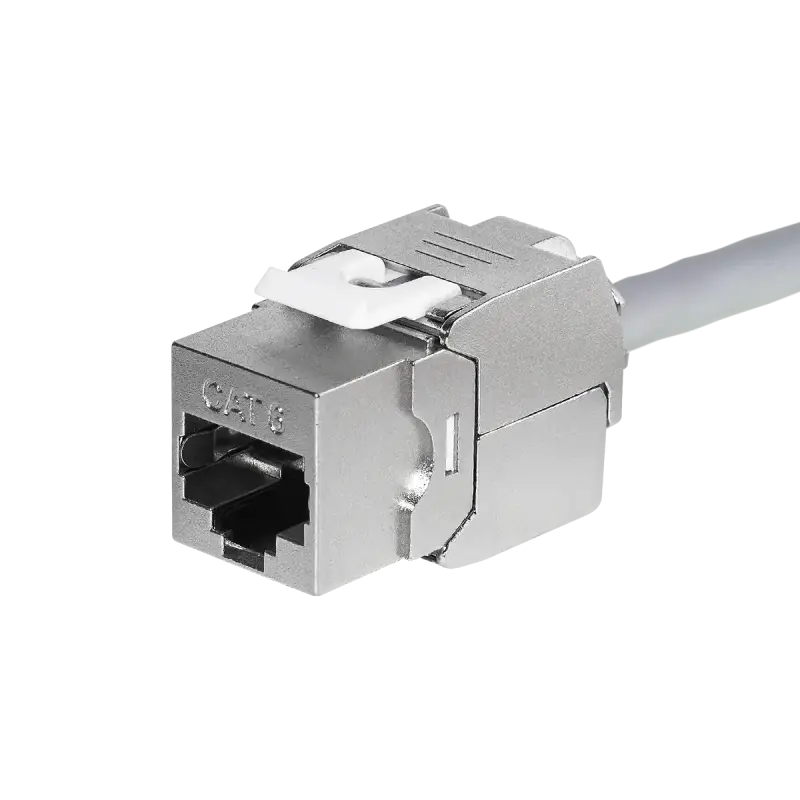
By Wiring Method
Punch Down Keystone Jack
Punch down keystone jack requires specialized wiring tools during the installation of network cables, which can ensure reliable contact performance, usually used for network installation applications that require higher reliability and durability. In addition, the IDC of the keystone can also be divided into 110, krone, dual, which means using different types of punch down tools. 110 is commonly used in the Americas, while krone is more popular in Europe.
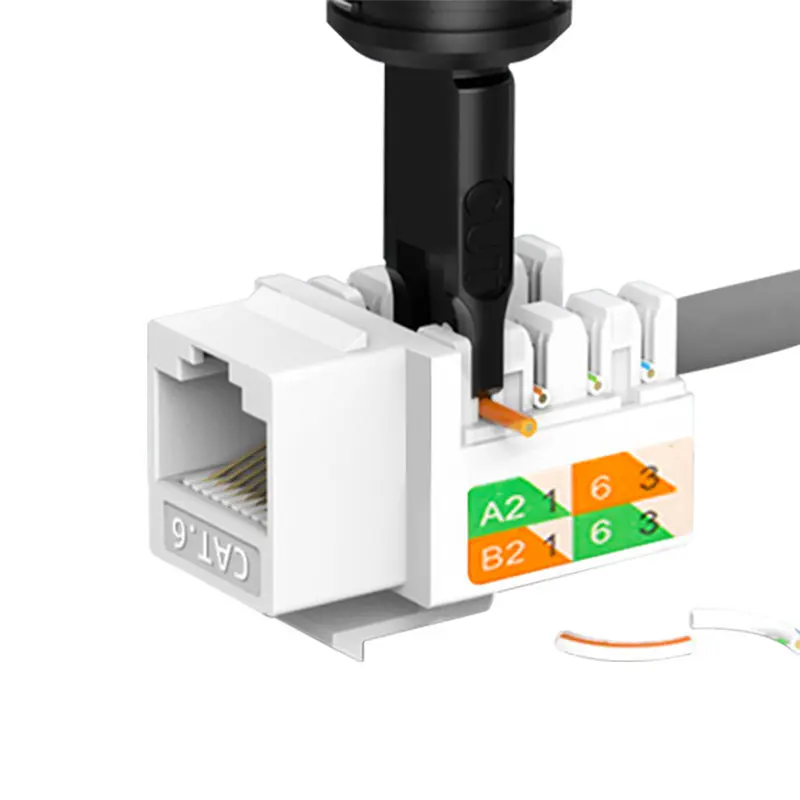
Toolless Keystone Jack
Toolless keystone jack does not require additional tools during wiring, aiming to minimize operating steps and make wiring easier for users. This type of keystone jack is commonly used in home networks and small office environments, with faster and more convenient connections.
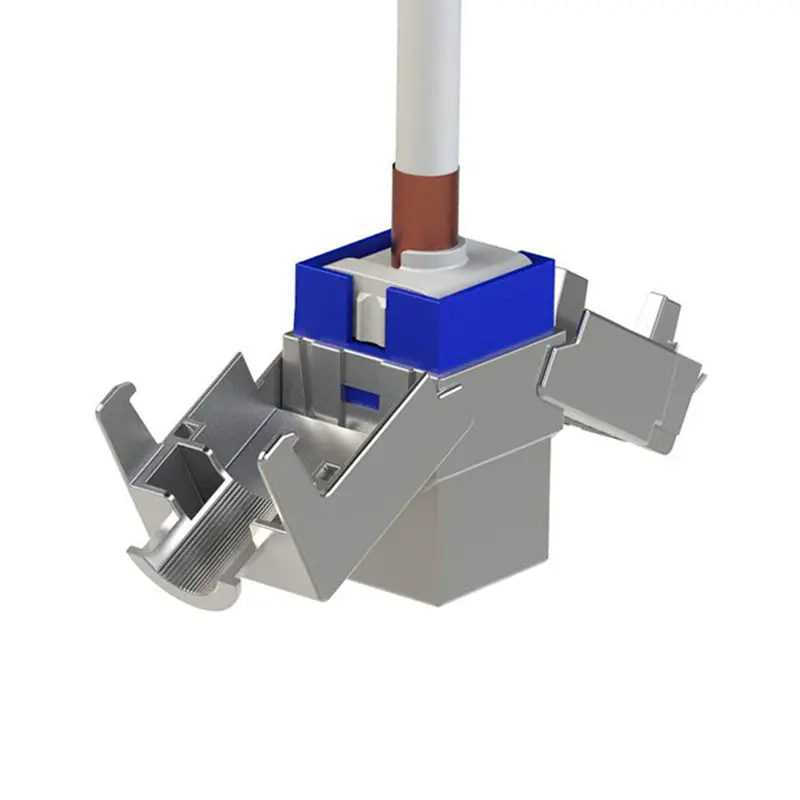
By Wiring Direction
90 Degree Keystone Jack
90 degree keystone jack refers to a keystone jack whose IDC is at a 90 degree angle to the RJ45 socket.
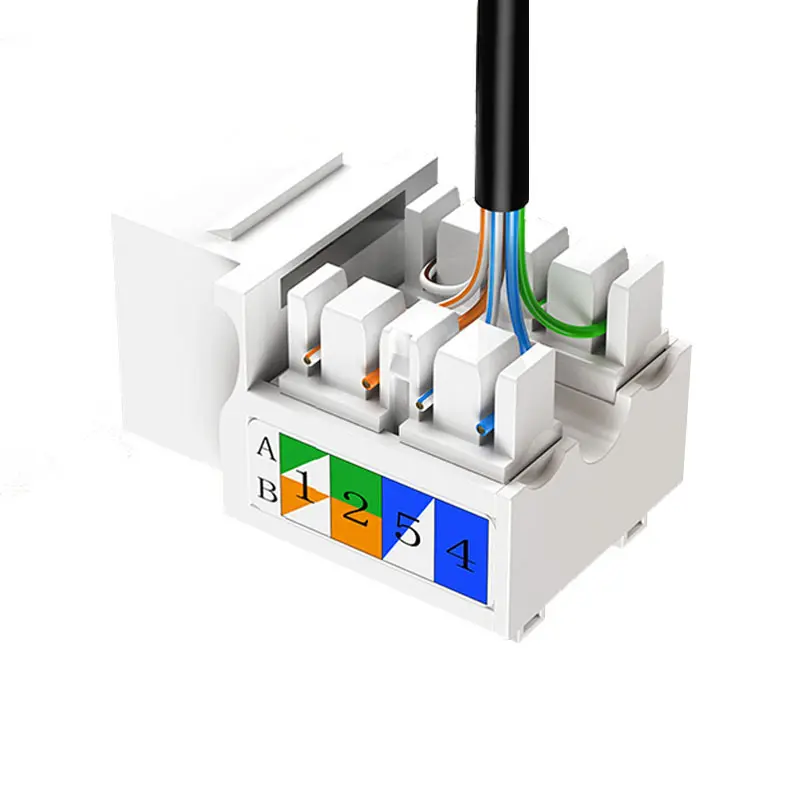
180 Degree Keystone Jack
180 degree keystone jack refers to a keystone jack whose IDC is at a 180 degree angle to the RJ45 socket. There is no performance difference between it and the 90 degree jacks, the specific choice depends on the habits of the application market.
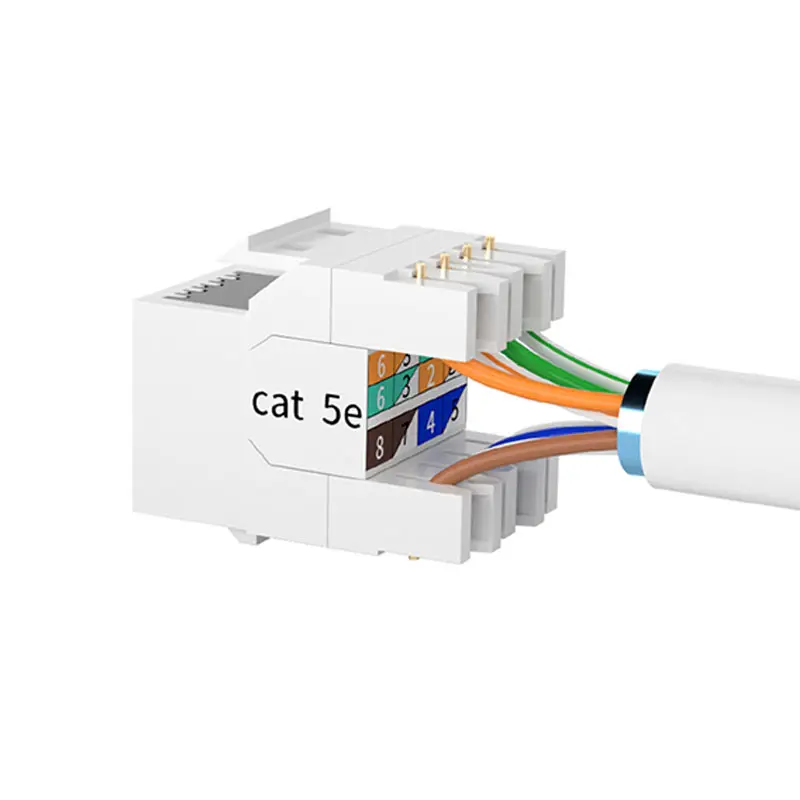
Application of RJ45 Jacks
Ethernet keystone jack is widely used in daily life and work, and can mainly be used in combination with the following products:
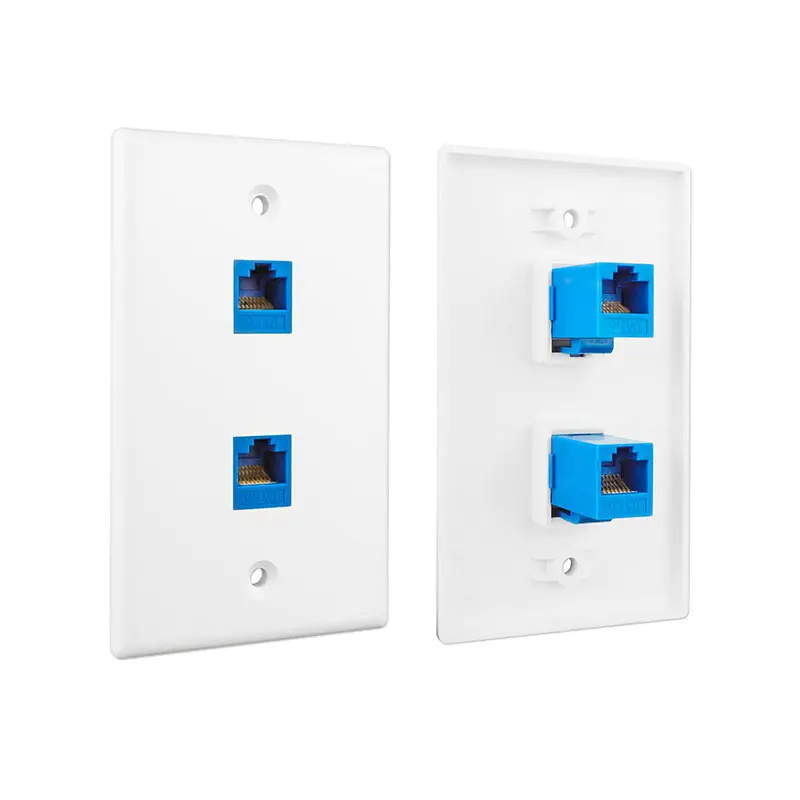
Wall Faceplate
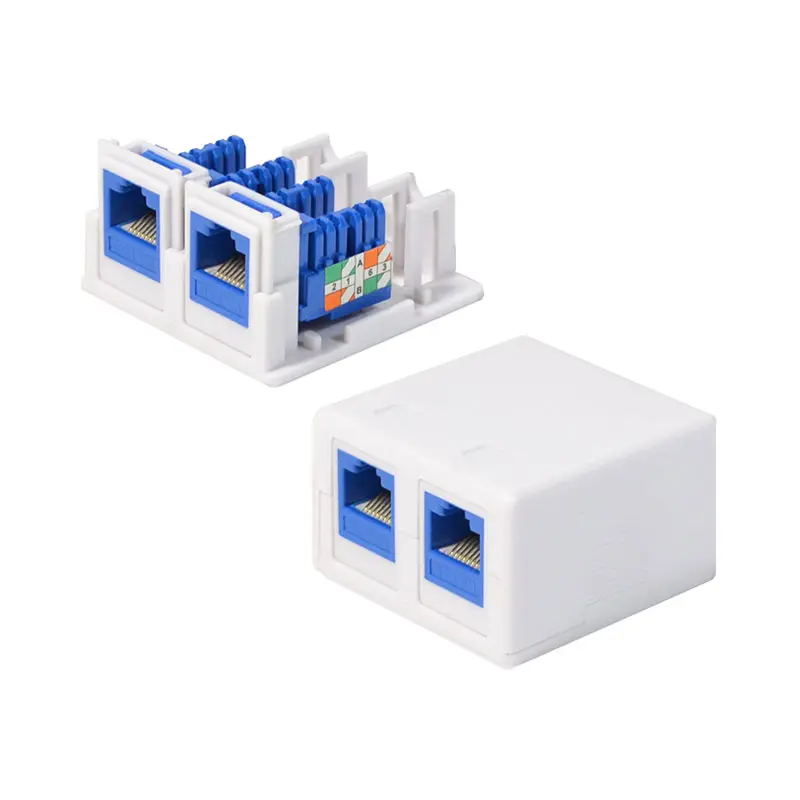
Surface Mount Box
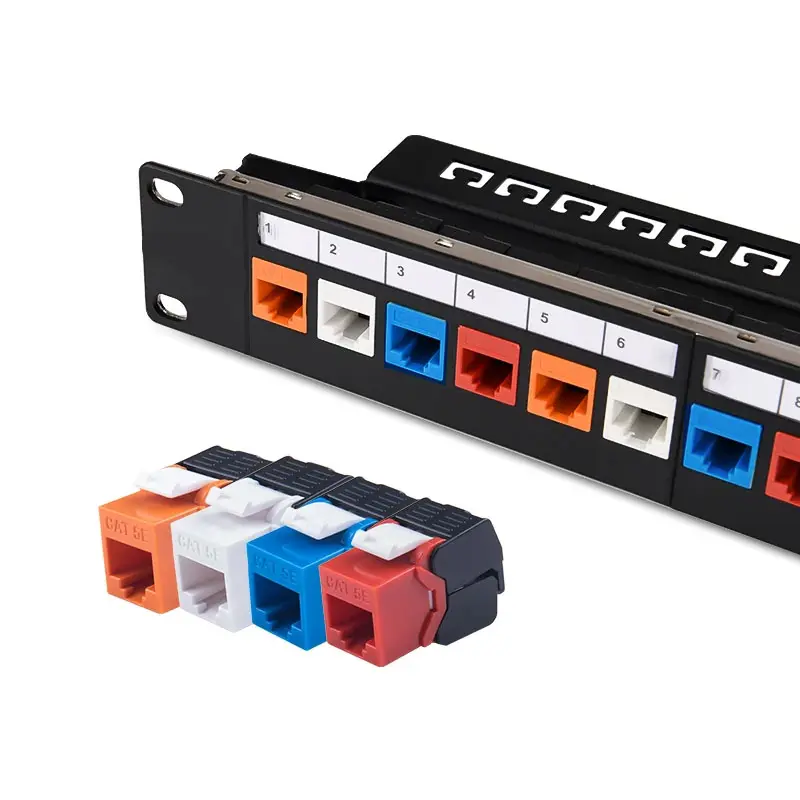
Keystone Patch Panel
How to Choose a Right Keystone Jack
Here, Gcabling will provide some advice on selecting right keystone modules from the perspective of professional keystone jack manufacturers.
1. Performance requirements
Based on your performance requirements for network connections, including transmission speed, frequency, etc., as well as the specifications of the Ethernet cable you are using, select the appropriate category of keystone jacks.
2. Application environment
Depending on the application environment, determine the type of keystone jacks required, such as unshielded or shielded.
3. Ease of installation and use
Select punch down or toolless keystone jacks, as well as 90 degree or 180 degree jacks according to installation requirements.
4. Compliance with standards
Ensure that the selected RJ45 jacks comply with relevant standards to ensure the compatibility of the link products.
Gcabling Keystone RJ45 Jack
Gcabling can supply a wide range of keystone jacks, here we list some hot-selling products.

